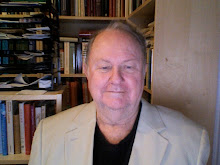Medieval Modern: Art out of Time
by Alexander Nagel (my review from Amazon).
Arguably, Meyer Schapiro was the greatest art historian ever produced in
America. His two fields of concentration were medieval and modern art.
This pairing was not accidental, for Schapiro recognized that the two
periods share a common disregard for illusionism and the cult of beauty,
principles inaugurated by the ancient Greeks and revived during the
Renaissance. In a word, medieval and modern art are both anticlassical.
In
this light there has long been a need for a systematic account of the
felt affinity of medieval and modern art. Unfortunately, this book does
not meet that need. Nagel conveys no sense of the historical sequence
of medieval civilization, a complicated matter in which most readers
will need guidance to thread their way through the historical narrative.
Yet the author rejects periods in favor of a kind of an "episodic"
approach, hopping from one topic to another. Moreover, he complicates
the Middle Ages by adding such figures as Michelangelo and Titian,
Parmigianino and Bruegel--artists who can in no sense be characterized
as medieval.
The author's sense of modern art is almost as
muddled. Unaccountably, he fails to discuss the evocation of medieval
buildings by Monet (Rouen Cathedral), Matisse (Notre-Dame de Paris),
Delaunay (Laon Cathedral; and St.-Severin) and O'Keeffe (Taos church).
In each case these works were important milestones in the individual
artist's development.
Setting these deficits aside, what does one
actually get from Nagel's book? It is a kind of grab-bag of aperçus
and speculations, generally proceeding from some casual encounter with a
modern or contemporary work. The effect is one of blundering into a
room in which the speaker conducts an endless grasshopper conversation.
Taken on these terms, though, the book may be stimulating.
The
last page offers a conclusion of sorts: "It is hard to think of any
category of current work whose terms were not set in the 1960s. The
medievalism that was such a constitutive part of the development of the
1960s is, therefore, now encoded (usually unrecognized) in the DNA of
contemporary art." Unrecognized--and unrecognizable.
On the
positive side, the publisher has embellished the text with many striking
photographs. Whether this lavish feature will be enough to compensate
for the narrative deficit of the text must be left for the reader to
decide.
Saturday, April 13, 2013
Subscribe to:
Post Comments (Atom)

No comments:
Post a Comment